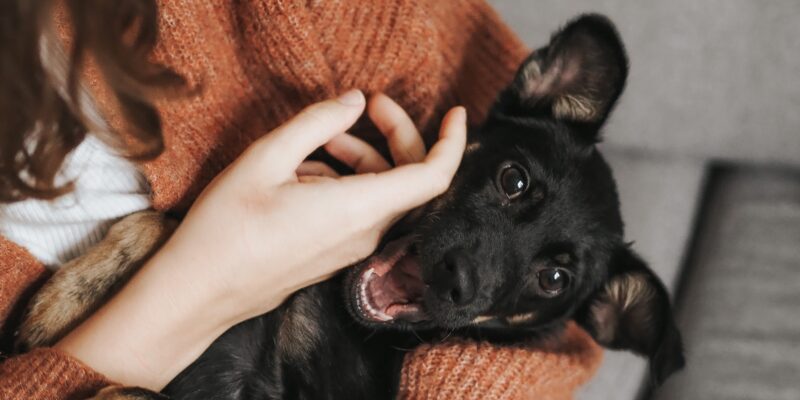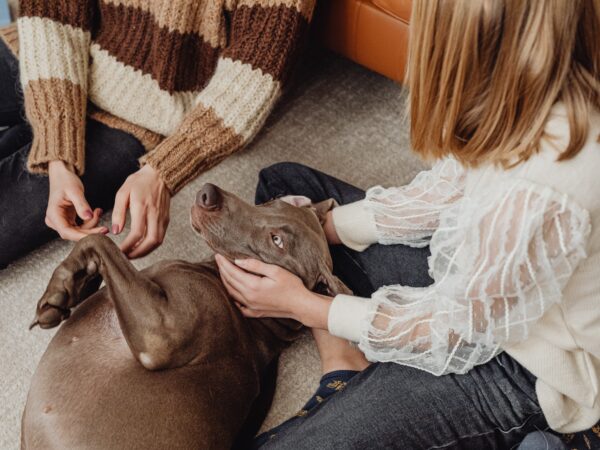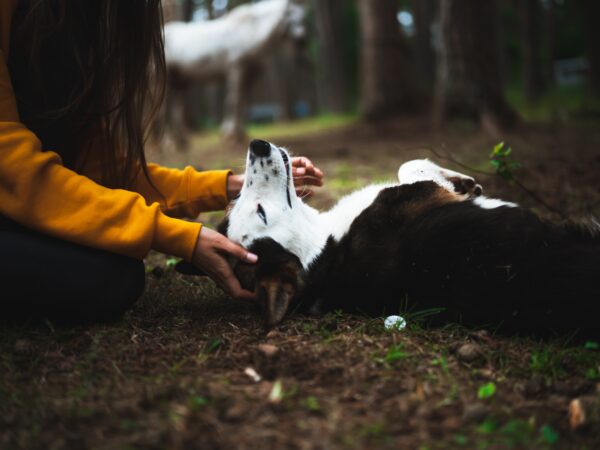Pets have been in our lives for thousands of years. They are not only great companions and sources of happiness, but they also provide so much love and affection to their owners. Pets may not be able to communicate with humans through language, but they communicate in their own way, using their body language.
As a pet owner, it is important to understand your pet’s body language to better understand their needs and emotions. In this article, we will discuss some common body language cues seen among pets and what they could mean.
Understanding Your Pet’s Body Language
Body language is an essential part for communication with animals, and it can be very different from human body language.
Just like humans, pets have varying degrees of expressiveness, and their body language can vary depending on their breed, age, and size.
Before we start understanding our pets’ body language, it is essential to know that it is not an exact science, and the signals they send may not always be clear.
Triggers of Body Language
Several triggers can affect your pet’s body language. Fear, anxiety, excitement, and aggression are some of the triggers that lead to the expression of their body language. A stimulus or trigger can affect an animal in different ways, depending on their level of sensitivity.
Some of the common Triggers include:
– Physical contact – this can be positive or negative;
– Sudden movements, loud noises, or lights can be frightening to some animals;
– Smells and unfamiliar scents can also trigger different reactions;
– Different environments and surroundings can cause anxiety or excitement.
Dogs
Dogs are known for their expressive behaviour, and as a dog owner, understanding their body language is crucial. You can observe your dog’s body language in various situations, such as when they are playing, when they are meeting a new person or animal, or when they are experiencing fear.
Tail – A dog’s tail can communicate emotions such as happiness, excitement, and fear. A wagging tail usually indicates a happy and excited dog. However, the tail can also indicate fear or agitation. If the tail is tucked between the dog’s legs, it is often a sign of fear or submission.
Ears – Dogs’ ears can also give us valuable information about their emotional state. An upright ear usually indicates attentiveness or alertness, while ears that are pinned back against the head are often a sign of fear, anxiety or aggression.
Mouth – Dogs’ mouths can also communicate their mood. A relaxed mouth usually indicates a calm dog, whereas a tense mouth suggests aggression or agitation. If your dog is showing their teeth or snarling, this is a clear sign of aggression.
Eyes – A dog’s eyes can also communicate their emotions. Dilated pupils often indicate fear or excitement, while narrowed pupils suggest aggression.
Eye contact is also essential in communicating with your dog. Direct eye contact can indicate dominance or aggression, while avoiding eye contact can signal a lack of interest, fear, or submission.
Cats
Cats are known for being more reserved and independent, but they communicate their emotions, needs, and desires through body language. It is important as a cat owner to recognize their body language to avoid misunderstandings.
Tail – A cat’s tail can indicate their mood. A raised upright tail usually suggests a happy and confident cat. However, a tail tucked between their legs could indicate fear or anxiety. A swishing tail is often a sign of agitation or irritation.
Ears – Ears can also reveal their emotional state. They are perked forward usually demonstrate interest and alertness. Ears that are flattened against the head can indicate fear, anxiety, or aggression.
Eyes – A cat’s eyes can give valuable insight into their emotions. Dilated pupils indicate excitement or fear, while narrowed pupils suggest aggression.
Body – The position of a cat’s body can also give clues about their emotional state. Arched backs indicate agitated or frightened cats, while relaxed and comfortable cats have straight backs.
Birds
Birds are a common pet that can also communicate their emotions through body language. Different types of birds can have varying levels of expressiveness, but they all have similar ways of communicating their emotions.
Posture – The way a bird positions their body can tell you a lot about their mood. A relaxed and comfortable bird will often have a straight body, while an agitated bird may have a hunched or puffed up body.
Feathers – A bird’s feathers can also be a good indicator of their mood. Fluffed-up feathers suggest that the bird is relaxed and comfortable, while sleek feathers indicate a worried or anxious bird.
Eyes – Birds’ eyes can give you information about their mood. Dilated pupils indicate excitement, while narrowed pupils suggest fear or aggression.
Beak – A bird’s beak can also be an excellent indicator of their mood. A relaxed beak usually indicates a comfortable bird, while a beak that is clamped tightly shut can indicate fear.
Fishes
Fish may not be as expressive as other pets, but they still communicate through body language. Understanding their body language is essential to ensuring their wellbeing and happiness.
Movement – A fish’s movement can indicate their mood. Quick movements suggest fear or anxiety, while slow movements indicate a relaxed and comfortable fish.
Colors – A fish’s colors can give insights into their emotional state. Bright and vibrant colors are signs of a healthy and happy fish, while dull and muted colors can indicate illness or distress.
Fins – A fish’s fins can also indicate their mood. An extended fin often indicates aggression or territorial behavior, while a closed fin suggests a relaxed and comfortable fish.
Conclusion
As a pet owner, it is essential to understand your pet’s body language to better understand their needs and emotions.
Every animal is different, and what may work for one pet may not work for another.
It is important to observe their body language and determine what they are trying to communicate. By learning to understand your pet’s body language,
you can create a happier and more fulfilling life for both you and your pet











